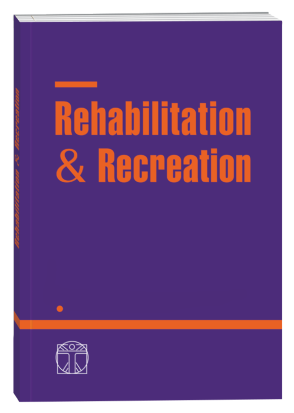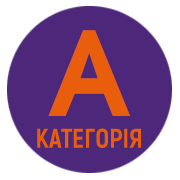ЕРГОТЕРАПІЯ ВІЙСЬКОВОСЛУЖБОВЦІВ ПІСЛЯ ОПІКУ ДОЛОНІ
DOI:
https://doi.org/10.32782/2522-1795.2025.19.2.10Ключові слова:
ерготерапія, реабілітація, опіки, військовослужбовці, функціональне відновлення, індивідуальна програма, заняття, оцінкаАнотація
Мета – описати, обґрунтувати та систематизувати базові аспекти ерготерапії військовослужбовців після опіку долоні. Матеріали та методи. Застосовано теоретичні методи наукового дослідження, а саме: аналіз, синтез, абстрагування, конкретизація, індукція, дедукція, логічні методи, системні методи. Системні методи дали змогу: виявити та проаналізувати всі чинники, які впливають на перебіг реабілітації після опіків долоні, а також на ефективність ерготерапії; зрозуміти взаємозв’язки між структурними, функціональними і психоемоційними аспектами травми та процесу відновлення; розробити схему обстеження військовослужбовців після опіку долоні; розробити алгоритм дій ерготерапевта для результативного впровадження ерготерапевтичних утручань; розробити програму ерготерапії військовослужбовців після опіку долоні. Системні методи теоретичного дослідження дали змогу отримати глибоке розуміння потреб пацієнтів даної категорії та чинників, що впливають на ефективність реабілітації. Результати. Основними передумовами успішного проведення ерготерапії є врахування особливостей опікової травми, глибини ураження, локалізації, больового синдрому, порушення чутливості та рухливості, а також психологічного стану військовослужбовця. Розроблено програму ерготерапії, яка включає три етапи: гострий період – профілактика контрактур, правильне позиціонування кінцівки, захист шкіри, мінімальні активні та пасивні рухи; підгострий період – розвиток моторики, сенсорна стимуляція, навчання самообслуговуванню; реадаптаційний період – відновлення професійних навичок, використання адаптивних пристроїв, адаптація до побуту та соціального середовища. Для уніфікації процесу реабілітації ерготерапія повинна базуватися на скаргах пацієнтів, що відповідають доменам Міжнародної класифікації функціональності. Алгоритм дій ерготерапевта включає: оцінку функціонального стану, визначення реабілітаційних цілей, складання програми втручання, упровадження методів ерготерапії, оцінку результатів і своєчасну корекцію. Засоби ерготерапії під час упровадження програми мають поєднуватися, комбінуватися та чергуватися таким чином, щоб дія одного засобу підсилювалась іншим. Використання вправ із предметами, моделювання реальних ситуацій, вправи на дрібну моторику, тактильна стимуляція, застосування ергономічного обладнання – усе це дає змогу досягти більшої ефективності. Зацікавлення та мотивація пацієнта сприяють покращенню емоційного стану, підвищують активність під час занять, сприяють поверненню до повсякденної діяльності. Висновки. Основні передумови ефективної ерготерапії повинні враховувати функціональні порушення, які виникають після опіку долоні, та відповідно підібрані інструменти оцінювання, що допоможе не лише застосувати ерготерапію, а й дасть змогу контролювати ефективність упровадження програми та її поетапну корекцію. Важливим аспектом є пацієнтоорієнтований підхід, який передбачає використання компонування засобів ерготерапії, мотивацію військовослужбовця до активної участі у реабілітації та відновлення автономності у побутовій і професійній сферах.
Посилання
1. Бурка В., Єфімов М. Деякі аспекти надання першої домедичної допомоги при опіках. Теорія і практика використання спеціальних знань у досудовому розслідуванні : матеріали Всеукраїнського науково-практичного семінару, ДДУВС, 25 травня 2023 р. 2023. С. 160–162.
2. Горюнова В.В. Відновлення шкірного покриву після опіків унаслідок осколкових поранень у хірургічному відділенні комбустиології Черкаської міської лікарні. Медицина в умовах воєнного часу : матеріали наук.-практ. конф., м. Харків, 9 січня 2024 р. Харків, 2024. С. 52–55.
3. Жернов О.А., Осадча О.І., Цапенко О.В., Козинець Г.П. Обґрунтування тактики реабілітації постраждалих з опіками та їх наслідками. Спортивна медицина, фізична терапія та ерготерапія. 2023. № 2. С. 152–157.
4. Каніщева О.П., Вялих О.М. Лікувальна фізична культура при опіках різного ступеня. Physical Rehabilitation and Recreational Health Technologies. 2016. № 2. С. 34–36.
5. Крук І.М., Григус І.М. Фізична терапія військовослужбовців із наслідками вогнепальних поранень. Rehabilitation & recreation. 2022. № 12. С. 44–51. https://doi.org/10.32782/2522-1795.2022.12.6
6. Крук І.М., Григус І.М. Сучасний погляд на психологічну реабілітацію військовослужбовців із посттравматичним стресовим розладом. Rehabilitation and Recreation. 2023. № 15. С. 50–56. https://doi.org/10.32782/2522-1795.2023.15.6
7. Лазарєва О., Щаслива І. Особливості ортезування низькотемпературним пластиком осіб з опіками верхніх кінцівок. Спортивна медицина, фізична терапія та ерготерапія. 2024. № 1. С. 206–212.
8. Резанцева М., Бас О. Особливості виникнення вторинних ускладнень після опіку кисті. Фізична культура, спорт та здоров’я нації. 2014. С. 705–708.
9. Cancio J.M., Cancio L.C. Combat and operational stress control: Application in a burn center. European Burn Journal. 2024. Vol. 5, № 1. P. 12–22. https://doi.org/10.3390/ebj5010002
10. Castro, J.C., Coltro, P.S., Millan, L.S., Corrêa, F.B., Farina Junior, J.A. Early application of microsurgical flaps in the electric burns of extremities: A two institutional case series. Journal of Burn Care & Research. 2018. Vol. 39, № 6. P. 1037–1042. https://doi.org/10.1093/jbcr/irx010
11. Mayo Clinic. Burns – Diagnosis and treatment. [Electronic resource]. https://www.mayoclinic.org/diseases-conditions/burns/diagnosis-treatment/drc-20370545
12. MDPI. Acute surgical and rehabilitation management of complex hand burns in combat casualties. European Burn Journal. 2024 Vol. 5, № 2. P. 126–144. https://www.mdpi.com/2673-1991/5/2/11
13. OccupationalTherapy.com. The role of occupational therapy within military settings. [Electronic resource]. https://www.occupationaltherapy.com/articles/roleoccupational-therapy-within-military-4115
14. OccupationalTherapy.com. Acute care back to the basics: Burn care. [Electronic resource]. https://www.occupationaltherapy.com/articles/acute-care-back-to-basics-5164-5164
15. Patterson, D.R., Wiechman, S.A., Jensen, M.P., Sharar, S.R. Patterns and predictors of hand functional recovery following burn injury. Journal of Burn Care & Research. 2018. Vol. 39, № 1. P. 25–32. https://doi.org/10.1093/jbcr/irx010
16. Physiopedia. Rehabilitation of hand burn injuries. [Electronic resource]. https://www.physio-pedia.com/Rehabilitation_of_Hand_Burn_Injuries
17. Scapin, S., Echevarría-Guanilo, M.E. Boeira Fuculo Junior, P.R., et al. Rehabilitation interventions after hand burn injury in adults: A systematic review. Burns. 2023. Vol. 49. P. 516–553. https://doi.org/10.1016/j.burns.2022.05.002
18. Van Biljon, H.M., Engelbrecht, M., Van der Walt, J., Soeker, S.M. Occupational therapy practice with burn injuries: A rapid review. South African Journal of Occupational Therapy. 2024. Vol. 54, № 1. P. 87–94. https://doi.org/10.17159/2310-3833/2024/vol54no1a10
19. Yu, A., Yick, K.L., Ng, S.P., Yip, J., Chan, Y.F. A study of using a simple 2D image analysis method to monitor the surface area of hypertrophic scars on hand during pressure therapy. Burns, 2020. Vol. 46, № 7. P. 1548–1555. https://doi.org/10.1016/j.burns.2020.04.014
##submission.downloads##
Опубліковано
Як цитувати
Номер
Розділ
Ліцензія

Ця робота ліцензується відповідно до Creative Commons Attribution-NonCommercial-NoDerivatives 4.0 International License.





